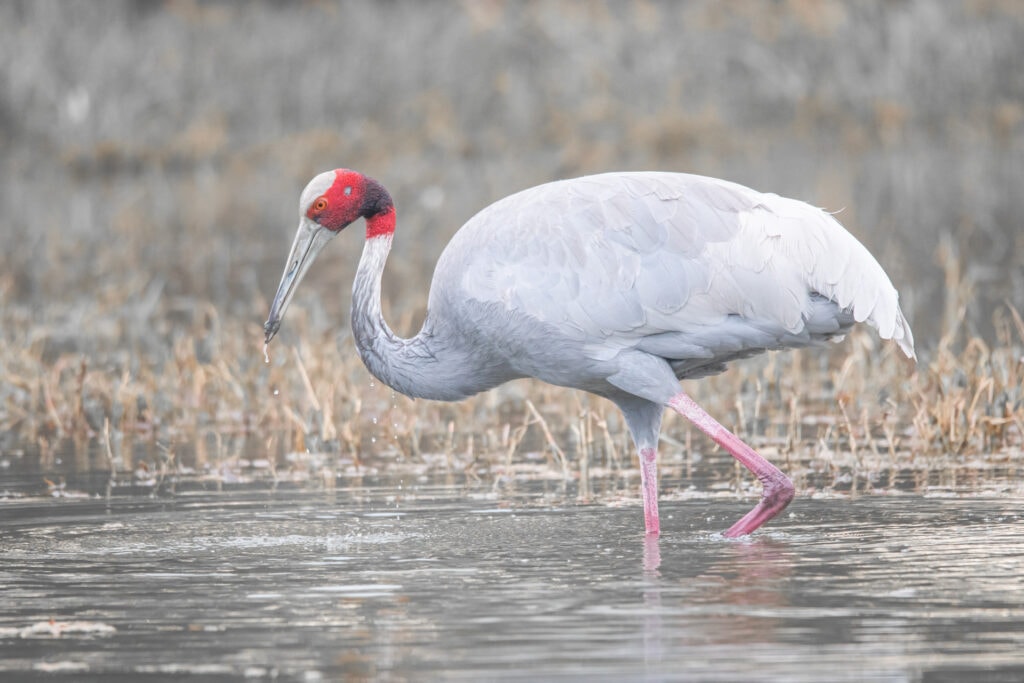According to Buddhist legend, the young Siddhartha Gautama, the prince who would one day become the Buddha, rescued a Sarus Crane. In some versions of the story, Prince Siddhartha and his cousin were practicing archery when his cousin struck the bird with an arrow. When his cousin stepped forward to claim his prize, Siddhartha intervened and expressed his desire to heal the crane. The dispute between the young men was presided over by the king. Despite his cousin’s claim as a hunter, Siddhartha was awarded the bird on the principle that someone who seeks to preserve life has a greater claim to it than one who aims to destroy it.
Related Article: 800 Year Old Royal Tradition Reveals Impact of Bird Flu on UK Swan Population
Other versions of the story claim that the bird fell from the sky when young Siddhartha was sitting in his father’s garden. In all versions, the Sarus Crane is the recipient of the gentle compassion of the Buddha. This relationship has endured through the storytelling of Buddhism and may even play a crucial role in the ongoing conservation of these birds.
In any case, the Buddha’s lesson is one that is crucial to the practice of conservation. The knowledge that life is sacred in and of itself, and that the sacrifices demanded by preservation are worth the life that is restored as a result, are key tenants of conservation, even in circles where spirituality has little or no involvement. The Sarus Crane’s relationship with the Buddha is a powerful sumbol for conservation.
The Sarus Crane is the tallest flying bird, capable of reaching a height of six feet tall. They are the largest cranes in the world and are known for their elaborate courtship displays. Because of these courtship displays, and the incredible lifelong mated pairs that Sarus Cranes form, these elegant wading birds are widely regarded as symbols of romance, marriage, fidelity, and love. In Buddhist contexts, this symbolism runs especially deep.
Sarus Cranes are considered both vulnerable and decreasing by the International Union for Conservation of Nature’s Red List of Endangered Species. In Lumbini, the town of Siddhartha’s birth, Sarus Cranes are a beloved symbol of the Buddha. In 2018, the Sarus Crane was named the ‘city bird’ of Lumbini. Furthermore, it was estimated in 2018 that in the entirety of Nepal, the total number of Sarus Cranes was roughly 300. Of those 300, as many as 250 were located in and around Lumbini specifically. A separate survey recorded nearly 600 cranes in and around Lumbini. According to this survey, the city and its immediate surroundings are estimated to house 90% of the total Nepalese Sarus Crane population.
The Buddha’s mercy continues to preserve this sacred bird as the Sarus Crane wetland restoration project that the International Crane Foundation and WWF Nepal, in partnership with Lumbini Development Trust, began in 1988 continues to bear fruit. But it may not be enough.
In spite of the special respect that Lumbini has for its crane populations, habitat degradation still continues to threaten these birds in Lumbini and around the world. Changes in land use practices eliminate the calm rice fields and wetlands that Sarus Cranes depend on. For the future of the Sarus Crane to be secure, further conservation efforts are vital.
Popular Article: Examining the Conflict Between Black Vultures and Farmers

